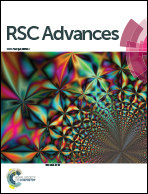Dissolution of brass alloys naturally aged in neutral solutions – an electrochemical and surface analytical study
Abstract
The ageing process of brass alloys, the dissolution rate versus time, was studied in artificial saliva (pH 7.4) and in a phosphate buffer solution (pH 7). Mechanically polished brass alloys (Zn content 18–38 wt%) were exposed for 1, 3 and 16 hours to the solutions open to air at room temperature. The open circuit potential (OCP) and linear polarization resistance (Rp) increased asymptotically with ageing time, indicating a decrease of the dissolution rate upon time. In the artificial saliva the corrosion rate decreased from initially 60 μm per year to 0.5 μm per year after 16 h of exposure, and alloys with a higher zinc content in the alloy showed higher dissolution rates. In the less aggressive phosphate buffer solution the corrosion rate decreased only by a factor of two. This different reaction mechanism can be interpreted on the basis of the surface film composition determined by X-ray photoelectron spectroscopy (XPS) and X-ray induced Auger electron spectroscopy (XAES): while following the exposure to artificial saliva a thick protective film of CuSCN and zinc phosphate was formed, the film present on the brass alloys was very thin and was made of copper oxide Cu2O and ZnO.



 Please wait while we load your content...
Please wait while we load your content...